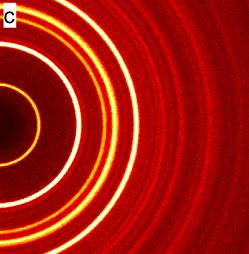Later:
Ukraine’s controversial but wildly successful fledgling domestic space program has successfully landed exo-atmospheric tactical drones on the moon and destroyed crucial construction components of Russia’s moon reactor facility, forcing many to question if it’s feasible to continue the project
Onion worthy
Fledgling? They’re an ESA member and have been building rockets since there’s been space programmes. Ignoring that drone part for a second the only thing they’d have to figure out is how to strap a warhead to one of their rockets, clear a launch site, do some maths, and press the button.
- it was pretty obviously a tongue-in-cheek commentary on the ingenuity of Ukraine and the ineptitude of Russia
- I am an NCD enjoyer
It’s to serve as a power source for a potential moon base, apparently.
Ohh, I was confused because I assumed the power would somehow be transported to Earth, which seems rather inefficient.
I like the idea personally
As an infrastructure project its conceptually pretty sick. A nuclear power plant would be fairly ideal for the first long-term human presence on the moon.
The problem is that it’s Russia and China doing it.
a country that is exceedingly good at space, and a country that is exceedingly good at infrastructure. sounds good to me.
Don’t be obtuse.
There are other concerns with developing space tech besides ones concerning competence and expertise.
Even that is worth questioning, as Russia is suffering historical levels of brain-drain for obvious reasons.
Excuse you.
China to this day still can’t bloody land spent rocket stages safely away from populated areas and you want them to fire off radioactive material into space and hope it doesn’t accident crash land back on populated areas?
I’m sure that money couldn’t be better spent. It’s not like there are hundreds of millions of Indians living in horrific levels of poverty.
how would you even start with the cooling? that sounds like a nightmare
… That’s a very good point actually. Vacuums are rather insulating. Without convection cooling from a fluid, you’re relying on radiative heat transfer for cooling, and that’s piss poor.
Lots of radiators.
No wind…
That’s why it’s a nuclear plant instead of a wind turbine /jk
Lithoradiators
I suspect you would dump the heat into the Moon itself. You wouldn’t need that much power up there.
Only operate when your side of the moon is dark or even near the poles where it can be coldest? I’m not sure what the plan is for daytime operations since it apparently gets really hot.
No atmosphere up there to insulate so the temperatures fluctuate to extremes
Unfortunately you can’t really turn off a nuclear reactor.
Russians: “Sure you can, it’s just this red button right here…”
If you have enough ice, you evaporate it.
If not, heat pump/ sink into basalt probably.
I suppose the regolith itself could be used as a heat sink. I don’t know what its thermal properties are like?
But yeah, I imagine heat dissipation is a limiting factor. Everything I’ve read suggests the 1st gen reactors will put out something on the order of 10s of kilowatts, so rather modest by nuclear standards but still plenty for a nascent Moon base I imagine?
Heat pipes running to radiators in vacuum is how you do it in space. It’s efficient and scaleable, though it hasn’t ever been done on an industrial scale. Definitely doable though. Considering the temperature on the moon is a balmy -270°C
It’s extremely difficult to cool things in space, as everything is basically insulated in a vacuum.
Yes. You need to use radiation, via radiators. It’s a shame I’m getting downvoted on this, because I really do know what I’m talking about on this one. Ammonia in heat pipes wicks the heat away from the thing you want to be cold, towards the radiator, which is usually just a dumb coil, but could be enhanced with a bimetallic thermally decoupled louver if you want to keep it cool in sunlight. Or bury it, since we’re on the moon. From an engineering perspective it’s not that difficult to do, as the variables which affect it are well known and don’t change that much. It is for sure slower than combined conductive/convective cooling, but it’s a known quantity, so you can plan quite effectively.
It’s definitely possible, however nukes have like 30-40% efficiency so to cool even a tiny 10 kW reactor you’d need twice the capacity the ISS currently has (14kW) for just the reactor without any safety margins.
you could use space that shit is called as balls
The temp is low but it is a vacuum. Vacuums are bad at dissipating heat. Think of the vacuum walled drinking vessels. They are so efficient at keeping beverages hot/cool because the vacuum insulates the majority of the surface area that heat can move across.
Likewise a cooling tank of water (typical nuclear reactor design) itself surrounded by vacuum, will not cool efficiently at all. Presumably they’d have to use piping to circulate the water over a large surface area of some other medium like the moon rock itself.
I’ve got it. Since we’re worried about rising sea levels on earth, we can just pipe the excess water to the moon and flood the moon’s surface with water and use that for cooling.
Hello, Nobel prize foundation?
Yes, this man right here!
Vacuums are bad at dissipating heat.
They’re also very good at not stopping infrared radiation.
The IR band gap is high enough that you’d need really efficient heat pumps to keep things radiating well. Otherwise the heat pumps generate more heat than you can radiate.
Dissipating heat in space is actually one of the major issues that comes up in designs for space applications. It’s… not easy.
Cooling is the process of offloading heat from one atom to another. In space and the moon, there’s very little…anything. You can’t transfer heat onto nothing - so an “air cooled” heat vent doesn’t work. Another user suggested they use the moon itself or moon dust as a heat sink, and you could do that in theory.
You can’t transfer heat onto nothing
Since we’re being pedants, that’s moving heat through nothing, not transferring it to nothing.
Not that it’s a viable means of heat removal for a reactor.
Considering India and China are nuclear armed geostrategic rivals, with ongoing territorial disputes, and not too distant history of hot wars, I think this type of cooperation can be a good thing.
But that’s also why I’m skeptical about how much dual use technology they’d be willing to share with each other. And when you’re talking about space travel, or moon bases, practically everything is dual use technology.
If anyone is unclear why Russia would be involved, it’s their rocket and nuclear technology. Or rather, the Soviet legacy of R&D that is still useful.
I’m not sure this is a great idea.
… why tho
That sounds like a maintenance nightmare.

Why do any space exploration?
While the west sells off space to billionaires and the private sector, we need players doing actual science.
Why do any space exploration?
The issue isn’t space exploration or the concept of a base on the moon. The issue is a nuclear plant on the moon. There’s a reason solar cells are so universal in space applications near the Earth, and it isn’t because the space industry is obsessed with being green.
They already use nuclear power in loads of applications. The mars rover, perseverance satellites and even satellites in LEO. They can provide power during lengthy lunar nights and the heat they produce as a byproduct would be useful for keeping people warm. This isn’t even even mentioning advancements in nuclear reactor designs that make meltdowns conditions considerably less likely. Your right that solar cells are a great way to produce power in LEO but on the moon there are more variables that make it viable for a nuclear reactor to be a rational power source.
You’re out of your depth here… Those reasons for affordable solar cells on earth in no way directly translate to applications in completely different environments (planets or moons)
… why tho
Just ask NASA or ESA
https://www.ans.org/news/article-5894/nations-envision-nuclear-reactors-on-the-moon/
This idea of “well earth has solar, so solar must work just as well on the moon!” doesn’t take into account natural lunar resources (solar needs rare earth metals) , atmospheric conditions, thermal conditions, material transport, etc… Sure, a well-functioning moon settlement would probably have a combination of thermo, solar, and nuclear power, but it is strange how you’re writing off one of the most promising forms of energy that excites and interests space scientists most.
These issues you’re having just sound like cope due to the fact that the US is now lagging in space science.
You’re out of your depth here… Those reasons for affordable solar cells on earth in no way directly translate to applications in completely different environments (planets or moons)
‘on earth’
Did you miss the bit where I specified space applications, or did you just ignore it?
The Apollo programme’s own geologist, Harrison Schmidt, has repeatedly made the argument for Helium-3 mining, whilst Gerald Kulcinski at the University of Wisconsin-Madison is another leading proponent. He has created a small reactor at the Fusion Technology Institute, but so far it has not been possible to create the helium fusion reaction with a net power output.
This idea of “well earth has solar, so solar must work just as well on the moon!” doesn’t take into account natural lunar resources (solar needs rare earth metals) , atmospheric conditions, thermal conditions, material transport, etc… Sure, a well-functioning moon settlement would probably have a combination of thermo, solar, and nuclear power,
Holy fucking shit, dude, natural atmospheric and thermal conditions and material transport are exactly why nuclear power seems dubious to me as the basis for a moon base. I’m a proponent of nuclear power here on earth.
but it is strange how you’re writing off one of the most promising forms of energy that excites and interests space scientists most.
“Space scientists” here meaning ‘you’, apparently, since major investment into space-based nuclear power for earth-orbit and lunar applications has been very slim since the 60s despite niche applications and a small chorus of proponents, not unlike ‘Practical fusion in 20 years’ types.
These issues you’re having just sound like cope due to the fact that the US is now lagging in space science.
Uh. Okay.
Of all the things to kick-start industry on another planet, isn’t a nuclear fucking plant the most complex?
Yes but also no, might be significantly easier to cool for instance and no environmental concerns.
I got downvoted by people without critical thinking skills. A plant on the moon isn’t in space, it’s on the moon, a large cold rock, I don’t understand why no one charitably understood you can dissipate heat into the actual moon which is not warm and quite cold.
It is notoriously hard to cool things in space. There’s no water or air to dump the heat.
Can you elaborate more? I’m under the impression space is very cold, and the heat would get sucked out like I wish I was, at least once before I eat shit.
the cold is helpful but moving the heat, but is the hard thing getting it away from the space craft. Since there is no atmosphere to take away your heat it just kinda sits there. If it is getting the suns rays it can be even more difficult. so basically it is quite hard.
Space is cold and not dense. Heat needs to move from a high energy medium to a low energy medium to be dissipated. Since there isn’t any matter for the thermal energy to be transferred to, cooling in space is actually quite difficult.
You need to put the heat somewhere. In the vacuum, heat can only transfer by radiation, which is much less efficient.
Bro you have hundreds of tons of cold stone on the moon. I didn’t say space.
I’m not taking scientific inputs by somebody who starts sentences with “bro”.
That’s on you if you want to dismiss my insights on the basis of the language I use to express ideas. Pretty surface level evaluation tbh, bruh.
I dismissed your idea because it’s bad. I decided to not waste my time explaining on the basis of the language you use.
The fact that I have to clarify this confirms I made the right decision.
What a pompous position to take. I sure hope you don’t make important decisions anywhere.
For what purpose??? Solar power makes the most sense on the moon. No atmosphere.
But it would require a stable power supply – which only a nuclear reactor can provide, as the Moon’s lengthy lunar nights make solar energy unreliable.
Just put 4 solar stations equidistant around the moon and wire them together. Boom, stable solar power!
Boom thousands of kilometer of cable to install and loss of power on transmission.
They would need lots of power to run life support, produce air and fuel from water. Solved problems on nuclear subs.
And batteries are heavy. It would take a lot of lifts to get enough capacity up there.
Just put them at the poles??
The trouble with solar on the moon is that the day-night cycle is a month long. You have to figure out what to do during the 2 Earth weeks worth of night.
I suppose with a polar base, you could have several solar farms strategically placed so that at least one of them is operational at any given time, but that’s a lot of infrastructure and this is early days.
Cold War II: Lunar Nuclear Boogaloo
deleted by creator
We’ve been launching nuclear reactors into space for decades (mostly RTGs) they’re just much smaller. There isnt any chance of them exploding or anything when exposed to radiation, but yes the chance of the rocket failing, exploding and showering radioactive material over the ocean is why this has to be done incredibly carefully if it is done.
deleted by creator
RFI - Radio France Interntionale - News Source Context (Click to view Full Report)
Information for RFI - Radio France Interntionale:
MBFC: Least Biased - Credibility: High - Factual Reporting: Mostly Factual - France
Wikipedia about this sourceSearch topics on Ground.News














